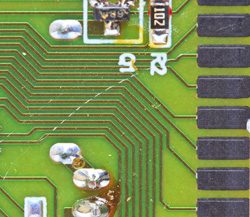Fire-resistant cables for emergency circuits
Fires cause thousands of deaths and hundreds of thousands of injuries each year in the EU alone, with a financial cost estimated at close to EUR 100 billion. Fire alarms and emergency lighting are very effective in reducing such damage. However, their effectiveness is dependent on fire-resistant cables to transmit data and power that are currently subject to failure at the joint in a metallic shield layer. EU-funded scientists initiated the project FIRE SHIELD to produce improved fire-resistant cables, and specifically a currently non-existent fire-retardant network data cable. Current soft-skinned fire-resistant cables are vulnerable to failure at the joint running the length of the cable where metallised polymer films (generally copper-based) are wrapped around the elastomeric cable compounds. Scientists investigated a novel dynamic cold spraying process to apply the conductive copper coating directly onto the cable as it is extruded. Researchers identified the acceleration of metallic particles during spraying as a key enabling technology, and designed and fabricated powder-accelerating nozzles. They then investigated cable materials with enhanced hardness to improve the cold gas dynamic deposition of the conductive copper coating. Compounding of silicone rubber with various fillers yielded promising fire-resistance properties, but uniform copper deposition was challenging and did not form electrically conductive coatings. Focusing then on promising fire-resistant elastomer compounds, scientists sought to develop formulations for emergency circuits with superior char strength to avoid cracking in accordance with the British Standard (BS) EN 50200:2006 and BS 8434-2:2003 tests. Scientists demonstrated that silicone compounded with a combination of boehmite, precipitated calcium carbonate and glass flake together gave very interesting results. Work is underway to optimise the proportion of each filler. FIRE SHIELD scientists expect to deliver fire-resistant cables for emergency power and data transmission circuits superior to those currently available on the market. The technology will significantly enhance the competitive position of numerous small and medium-sized enterprises (SMEs) working in the field and protect lives and property in the event of fires.







